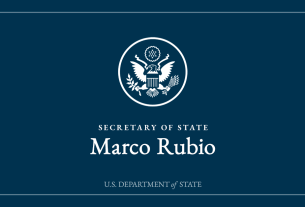The world markets witnessed a tumultuous week as stocks plummeted, marking one of the worst trading periods in recent years. The escalating trade war between the United States and China sent shockwaves through financial sectors, with China retaliating against President Trump’s tariffs by imposing a hefty 34 percent duty on imported U.S. goods.
Market turbulence intensified following Federal Reserve Chair Jerome Powell’s cautionary remarks, predicting that the tariffs could trigger price hikes and weaken economic stability. The repercussions were immediate and severe, with major indices experiencing substantial declines.
The Dow Jones Industrial Average nosedived by 5.5 percent, reflecting investor anxiety and uncertainty. The Nasdaq Composite Index followed suit, shedding nearly 6 percent and officially entering a bear market phase, signifying a significant drop from recent peaks. Additionally, the S&P 500 Index recorded a substantial decline of almost 6 percent, underscoring the widespread market turmoil.
Despite a robust jobs report that surpassed expectations, revealing the addition of 228,000 new jobs last month, investors remained fixated on the escalating trade tensions. China’s retaliatory measures in response to the U.S. tariffs exacerbated market jitters, contributing to the sharp downturn.
The prevailing sentiment was one of unease and apprehension as investors grappled with the potential ramifications of the trade disputes on global economic health. The specter of higher prices and economic instability loomed large, casting a shadow over market sentiment.
As global markets navigate this period of heightened volatility, the impact of these developments on economic growth and financial stability remains a pressing concern. Investors are closely monitoring the evolving situation, bracing for further market fluctuations in the wake of the trade war escalation.



